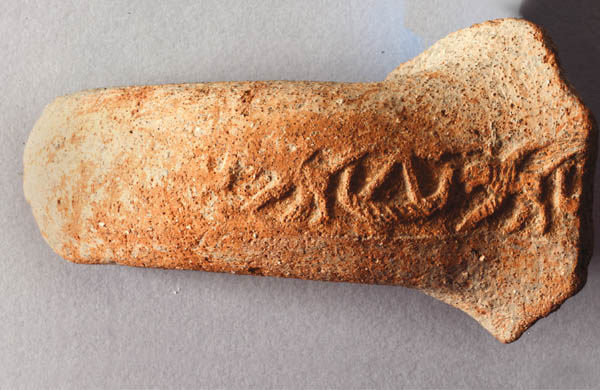Image Details

Photo: Courtesy of Claude Doumet-Serhal
SIDON’S STORM GOD. Sidon’s storm god appears on an impressed handle found in an early Canaanite pit next to one of Sidon’s Middle Bronze Age burials. Dated around 1750 B.C.E., the handle depicts a ship and a leonine dragon, which is the symbol of the storm god Adad. The Sumerian word for this composite animal—this half-lion, half-eagle “roaring” weather beast—is Ušumgal. The origins of the leonine dragon as the storm god’s attendant go back to the third millennium B.C.E. In depictions, Adad is sometimes shown standing on a leonine dragon, but more frequently on a bull, both of which are his symbolic animals. In other representations, the leonine dragon pulls the storm god’s chariot. The above impression is a repeating pattern that was made by rolling a cylinder seal across the handle while the clay was still damp.
The Mesopotamian storm god Adad roughly equates with storm gods from other cultures and time periods throughout the ancient Near East, including the later Phoenician storm god Baal or Bel—the worship of whom is condemned strongly in the Hebrew Bible (see, e.g.,
